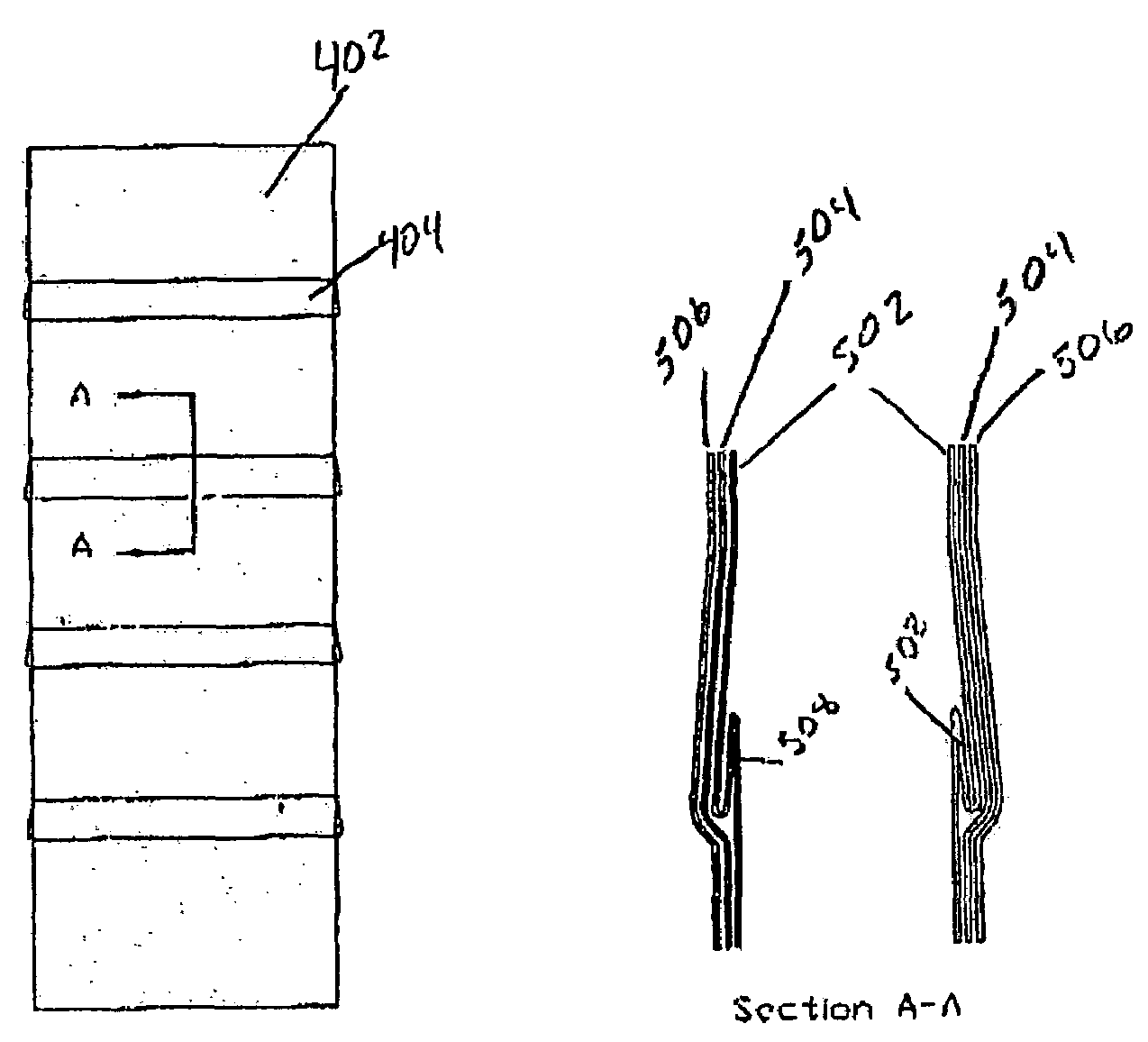Pleated composite ePTFE/textile hybrid covering
a composite material and hybrid covering technology, applied in the field of composite multi-layer implantable material and structure, can solve the problems of increasing the thickness of the tubular structure, affecting the implantation process, so as to improve the ingrowth of tissue, reduce the thickness of the textile layer, and improve the effect of tissue ingrowth
- Summary
- Abstract
- Description
- Claims
- Application Information
AI Technical Summary
Benefits of technology
Problems solved by technology
Method used
Image
Examples
Embodiment Construction
:
[0039]The present invention provides a composite implantable prosthesis material and structure, desirably a vascular prosthesis material includes two layers of ePTFE, typically surrounding a stent, and a layer of a textile material. The ePTFE stent / graft layers are secured together, with the textile layer, by an elastomeric bonding agent. The vascular prosthesis material and vascular prosthesis of the present invention may include an ePTFE-lined textile vascular graft, and a ePTFE vascular graft including a textile covering. While this invention is satisfied by embodiments in many different forms, there are shown in the drawings and herein described in detail, embodiments of the invention with the understanding that the present disclosure is to be considered as exemplary of the principles of the present invention and is not intended to limit the scope of the invention to the embodiments illustrated. In this disclosure, the material and structure of the present invention may be desc...
PUM
| Property | Measurement | Unit |
|---|---|---|
| Elastomeric | aaaaa | aaaaa |
| Structure | aaaaa | aaaaa |
| Length | aaaaa | aaaaa |
Abstract
Description
Claims
Application Information
 Login to View More
Login to View More - R&D
- Intellectual Property
- Life Sciences
- Materials
- Tech Scout
- Unparalleled Data Quality
- Higher Quality Content
- 60% Fewer Hallucinations
Browse by: Latest US Patents, China's latest patents, Technical Efficacy Thesaurus, Application Domain, Technology Topic, Popular Technical Reports.
© 2025 PatSnap. All rights reserved.Legal|Privacy policy|Modern Slavery Act Transparency Statement|Sitemap|About US| Contact US: help@patsnap.com



